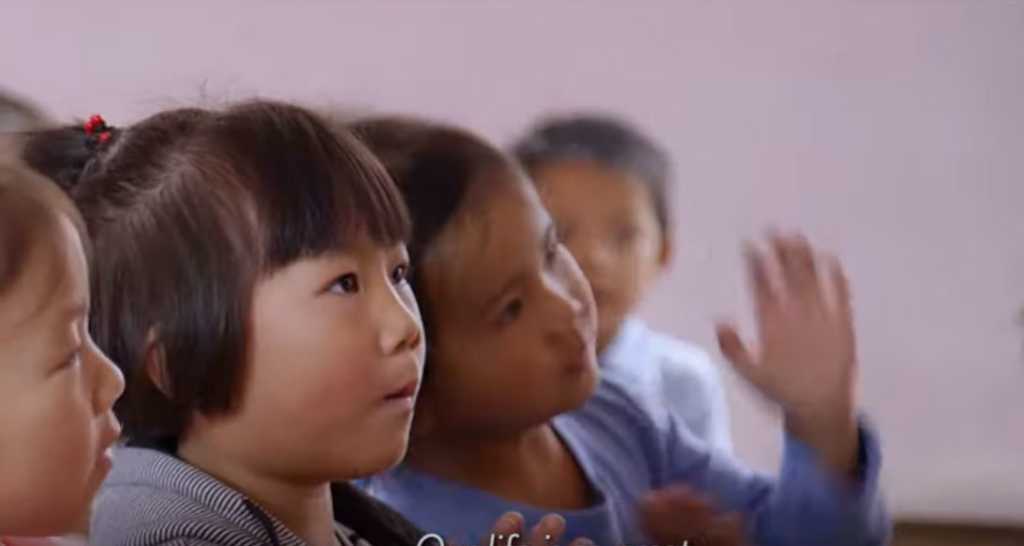A newly-made documentary reveals the depths of despair faced by women who suffered under China’s “one-child policy.”
The policy, which was enacted in 1980 and continued on until just a few years ago, was part of the Chinese government’s efforts to curtail population growth across the vast nation.
In reality, however, such a strictly enforced policy produced horrifyingly sordid situations in which women were forced to undergo sterilization and state-mandated abortion procedures.
Finally, in 2016, the law was abolished — but not before thousands upon thousands of women had suffered life-defining loss and pain at the hands of the authorities — a theme that is picked up on in the new film, “One Child Nation.”
“I never thought about what the policy meant for me or anyone until I learned that I was going to be a mum,” said the film’s co-director Wang Nanfu. “Throughout my life, I was taught to believe that love of my country was equal to love of the government and the [Communist] party.”
But forced abortion, as horrific as it is, was not the only problem facing young families at the time. Due to Chinese culture placing more value on males, the one-child policy caused a spike in the rate of female child abandonment.
Among Wang’s interviewees was a man who openly admitted that, had he been born as a girl, he “would have been put into a basket and sent away.”
Many of these orphaned children died of exposure after being left on the roadside. Others, however, would be exploited by traffickers and then adopted by Western families. According to Forbes, traffickers would earn around $200 per baby, with the orphanages that purchased them charging adoptive families between $10,000 and $35,000.
During the 1980’s, as a result of the heartless policy, China had the highest abortion rate in the world. According to figures cited by the Johnston’s Archive and backed up by Chinese Population expert, Wang Cuntong, in 1983, some 14.37 million abortions were carried out. The same year saw 56 out of 1,000 pregnant women undergoing termination procedures.
60,000 forced abortions
One of Wang’s interviewees, her former midwife, performed a staggering 60,000 abortion procedures — something that, as a Buddhist, she felt incredibly guilty about. She was conflicted, she said, between her Buddhist belief that “killing is wrong,” and her sense of duty to the Chinese government.
The midwife admitted that her “hands trembled” with fear during every procedure, but that she “had no choice.”
“I was the one who killed. I was the executioner,” she said. “The state gave the orders, but I carried it out.” She has since renounced her former life as an abortionist and now administers infertility treatment to help families who are struggling to conceive.
Following the introduction of a two-child policy in 2014, the Chinese government administration announced last year that it was in the process of ending all population control policies.
In North Korea, however, it is a different story. The secretive DPRK state has been enforcing abortion for years, but the issue has rarely received the same press coverage as missile tests or high-profile political handshakes.
“Terrifying reports from female defectors depict undergoing forced abortions after they fled to what they thought was freedom in China, only to be repatriated back to North Korea by authorities in China,” Olivia Enos, Senior Policy Analyst for Asian Studies at The Heritage Foundation, told Fox News.
Enos added that many more women from North Korea “recount having aborted babies born alive or giving birth in ordinary prison camps only to have border guards smother or drown their babies before their very eyes.”
These women are being “treated like animals,” added Dong Yon Kim, an analyst and journalist for Chosun News-Press. “This is inhumane and a serious problem.”
Marta Hurtado Gomez, a spokesperson for Office of the United Nations High Commissioner for Human Rights, confirmed that many violent abortions were being carried out upon women who were incarcerated in forced labor camps.
“We have gathered accounts of cases of forced abortion in detention,” she said. “This includes cases where detention officials reportedly sought to cause abortions through beatings or hard labor.”



